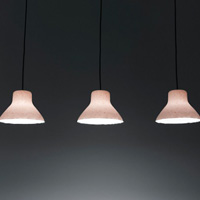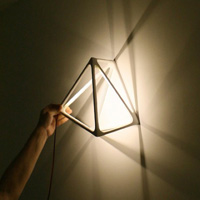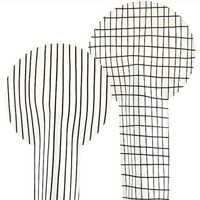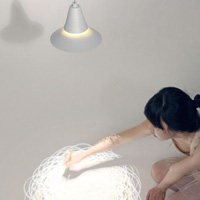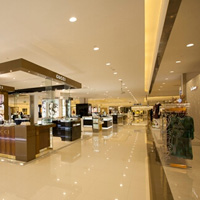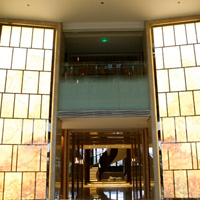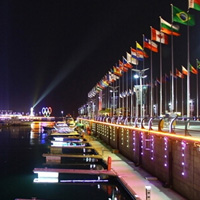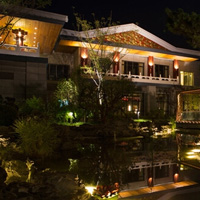Martin Klaasen: 照明设计是为人而做,而不是为了应付照度计!
摘要: Martin Klaasen从事照明行业超过30年,既是照明设计师、设计顾问,同时也是一位讲师。他毕业于工业设计专业,在飞利浦工作成为了他的照明事业的开端。几年后,他先后与新加坡Lumino设计公司、澳大利亚Lighting Images公司合作成立照明咨询公司。直到几年前,Martin成立了自己的设计公司KLD,专注于灯光设计。
Alighting Design: You have been working in the lighting industry for 30 years. What’s the biggest change of both the industry and yourself?
《阿拉丁·设计》:您在照明行业已经超过30年,这些年来照明行业以及您个人最大的变化是什么?
MK: When I started the incandescent bulb and the fluorescent tubes where the main tools to design with. Over the years we have seen unbelievable technological developments, unparalleled for any industry. I saw the growth of halogen lamps, metal halide lamps, the introduction of compact fluorescent lamps, induction lighting, fiber optics and now the new world revolution of LED technology. On a personal level that means that I have to re-adjust and re-learn nearly everything that I thought I knew because LED technology is a totally new ball game, with new rules, new definitions, new standards, new assessment and appreciation of qualities. The character of lighting and lighting design has changed radically and the lighting designer of today needs to differentiate between the LED professionals and the LED cowboys who try to benefit from this technology at all costs, a daily challenge!
MK:从最开始的白炽灯和荧光灯,我们见证了不可思议的技术进步。从卤素灯、金卤灯、紧凑型荧光灯、感应光、纤维光学到新世界革新技术LED,对个人而言,这意味着我必须重新学习并调整自我以适应这个全新的“游戏”,新的规则、新的术语、新的标准,以及新的品质评估系统。照明和照明设计的角色已经彻底改变了,照明设计师必须分清竭尽所能从飞速发展的技术中获益的LED专家和LED“牛仔”,这是我们每天都要面对的挑战。
Alighting Design: We know that you have started a blog named “Light Talk” since 2009, and the first year’s blogging was compiled into a book of the same name. Could you tell us about the blog? Why did you start writing? What purpose do you want to achieve?
《阿拉丁·设计》:您从2009年开始创立名为“Light Talk”的博客,而且第一年的博客内容已汇编成书。这是个怎样的博客?为什么开始写博客?您想达到什么样的效果?
MK: The blog started as a result of a challenge that I put to myself. Inspired by the film Julie and Julia (with Meryl Streep), where the lead person in the movie decides to try one recipe a day for a whole year from her favorite cooking hero and blog about it. After seeing the movie I thought why not blog every day for 365 days about my life as a lighting designer. I have many different projects, many different clients in many different countries, every project is different, with different people and cultures and comes with its own set of challenges and enjoyments. I decided that PLDC Berlin (a week later) would be the perfect time to start. As it turned out I was never shy of any subject to write about and now more than 5 years later I still write, though in a more compact (weekly) format. It was only after I completed my 365 days and looked at the material I had accumulated that I decided it would be perfect for a book! It has been highly successful and there are now even plans to have it translated in Chinese!
MK:这个博客是我给自己的一个挑战。其实是受到电影《朱莉与朱莉娅》的启发,电影主角用一年的时间每天尝试一份自己最喜欢的烹饪大师的食谱,并且用博客记录下来。我想,我有那么多的设计项目,有许多来自不同国家不同文化的不同客户,工作中伴随着一系列挑战和乐趣……为什么不把我作为灯光设计师的一年365天也记录下来呢?于是,一周之后的PLDA大会成为了“Light Talk”的起点,从此一发不可收拾,任何话题都不在话下。直至5年后的今天,我仍然坚持每周写一篇博客。也是在一年之后,看着累积了365天的文字,我萌生了要汇编成书的念头。这本书获得了很大的成功,现在也准备出中文的版本了。
Alighting Design: You have clients from different countries. How do you meet the cultural needs of different countries?
《阿拉丁·设计》:您的客户来自不同国家和地区,怎样满足不同地域的文化需求?
MK: The key is to listen to your client, always! A good designer is a good listener. Appreciate the values and culture of your host country, do not try to enforce only what you believe is right! See how things are done in that country, assess if that has merits and marry that with good lighting design that you practice! There are basic professional lighting standards that apply cross border, but implementation needs to be done against the accepted norms and practices in that country. Having said that one of our biggest challenges is to educate our clients in any culture about the benefits of better lighting design, specifically the cost-quality balance, because value for money has different meanings in different countries!
MK:关键是你得时刻聆听客户的心声。一个好的设计师必然是一个很好的倾听者。领会和尊重项目所在国家的文化和价值观,做自己认为对的事情。观察这个国家的行为处事方式,评估其中的优劣,配以优质的灯光设计。现行的基本照明专业标准适用于跨界领域,但在实施的过程中却不得不违背当地的某些公认的标准和习惯。灯光设计师最大的挑战之一是告知我们不同文化背景的客户,灯光设计的重要性,特别是成本与质量的平衡关系,因为不同国家对于金钱的价值会有不同的理解。
Alighting Design: What impresses you most while working for Chinese clients? What’s the difference from the other clients?
《阿拉丁·设计》:中国客户给您什么印象?与其他国家的客户有什么不同?
MK: Chinese clients seem in general bolder and more daring when it comes to exploring new concepts, they like something special, appreciate something new, something that will set them apart, contrary to other countries who generally are more conservative in their approach. On the flipside in China specifically the cost quality balance is heavily swayed towards costs. While costs are always an issue in any project and any country, in China specifically budgets seem to be totally inconsiderate of quality. This at times feels contradictory to the innovative and unique projects that are being developed. It is my main and foremost challenge in China and I am sure many of you have the same experience.
MK:中国客户很聪明,也更敢于尝试创新的概念。他们喜欢新的、特别的东西,因为可以将他们与其他“保守派”区分开来。但另一方面,在中国,成本与质量的天秤很明显偏向于成本。在任何项目中,成本都是一个重要问题,但在中国,预算里面似乎完全忽略了质量的因素。这看起来跟发展创新性和唯一性项目的追求背道而驰。这是我在中国最主要的挑战,相信很多人都有相似的经历。
Alighting Design: What do you think of the Asian lighting profession? How about the lighting design industry in China?
《阿拉丁·设计》:您如何看待亚洲照明行业的发展状况?中国的呢?
MK: It is without doubt that Asia in general and China specifically has seen an unprecedented growth where lighting design has certainly come of age. The activities of the CLDA, which I support as a member of the International Advisory Council, are testimony of that. While 10-20 years ago foreign lighting designers in Asia/China were the dominant force, we now see a reversal with leading countries such as China and India for instance, now having a big domestic lighting design fraternity.
MK:作为CLDA国际咨询委员会的一员,我可以肯定地说:亚洲,特别是中国的照明设计近年来经历了史无前例的快速发展,已经日趋成熟。在过去的十几二十年里,在亚洲,在中国,国外设计师都是主导力量,但现在情况发生了逆转,比如中国和印度,现在已经拥有了一大批国内的照明设计新力量。
Alighting Design: How to balance the functionality and aesthetics in lighting design?
《阿拉丁·设计》:怎样平衡照明设计的功能性与美学性?
MK: The key here again is the human factor. Once you keep that center to your lighting design approach the balancing and decision making becomes focused and easy, regardless of any project.
MK:同样,关键是“人”。一旦你将“人”置于灯光设计的核心,无论任何项目,你都可以专注而从容地做好多方的平衡与决策。
Alighting Design: Did you do the lighting design for your own house? What is it like?
《阿拉丁·设计》:您有为自己的房子做灯光设计吗?是什么样的?
MK: No not really! Because I travel so much with “homes” in several countries I have yet to settle down properly and design my own beautiful lighting at home…it is on my to do list for when I slow down and spent more time at home.
MK:没有。因为我经常旅行,在几个国家都有“家”,我还没有安定下来并为自己的房子设计灯光。不过,停下来好好享受居家时光,已经在我的待办事项里了。
Alighting Design: Could you share with us some of your favorite projects?
《阿拉丁·设计》:可以跟我们分享一些您最喜爱的项目吗?
MK: Some of my favorite projects are very small but because of that very satisfying as they were executed 100% the way I wanted. In general my favorite projects are those that give me the greatest satisfaction when completed big or small and generally these are the ones that are executed very close to design intent or those that despite strong budget limitations came out really well through our creative value engineering! For instance, Murdoch Art Wall, Fremantle Cliff, Grand Hyatt Goa, Shangri-la Futian Shenzhen.
MK:最喜欢的项目都比较小,但都100%是我想要的效果,给了我巨大的满足感。不论大小,这些项目的实现效果最接近我的设计意图,而且尽管在预算吃紧的情况下,通过我们创造性的工程设计,项目都能顺利展开。比如,默多克艺术墙,弗里曼特尔悬崖,印度果阿君悦酒店,深圳福田香格里拉大酒店。
凡注明为其它来源的信息,均转载自其它媒体,转载目的在于传递更多信息,并不代表本网赞同其观点及对其真实性负责。
用户名: 密码:

